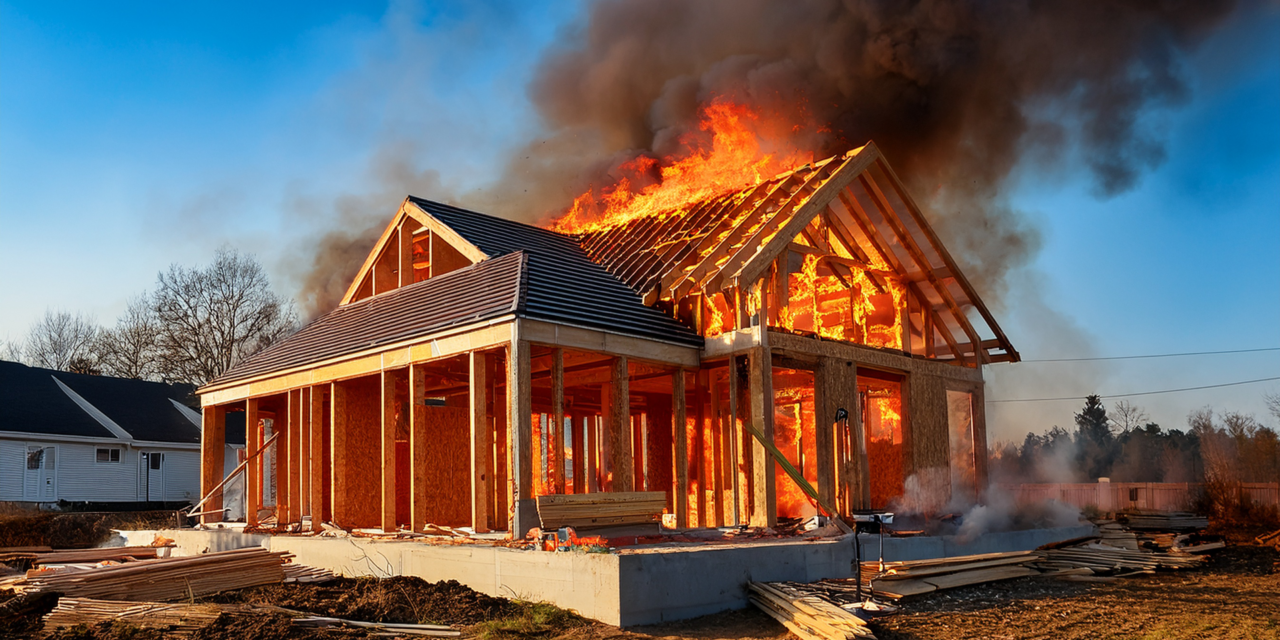What this article adds to the discussion: In the aftermath of another deadly fire season, the question of why we continue to build in wildfire zones returns. This article discusses the merits of a state-level intervention in land use planning to prevent further construction in wildfire zones.
Wildfires and real estate mix, apparently
Wildfires are a constant threat to property — and residents — across California.
Just since the start of 2025, the Palisades Fire burned over 23,000 acres near Los Angeles, destroying over 6,800 structures and killing 12 people, according to CalFire.
The most destructive fire in recent years took place at the other end of the state, with the Camp Fire. This wildfire destroyed 18,800 structures, killing 85 people.
As of 2022, over 7.1 million properties are at risk of wildfire in California — and growing.
As the climate continues to shift in the 21st century, the risk for wildfire increases alongside higher temperatures and drier conditions.
So, why are homes still being built in these dangerous wildfire zones, putting both shelter and life in danger?
Building into the fire
California’s strict zoning regulations actually incentivize developers to subdivide horizontally and build housing in wildfire zones, according to the University of California, Berkeley and Next 10, a California nonprofit organization.
Wildfire zones are locations near wildland areas where property improvements are highly susceptible to loss by wildfires. The greater the housing density in wildfire areas, the more the risk of loss to wildfires is exacerbated. Thus, to reduce risk of loss to wildfire, density in these wildfire zones needs to be reduced.
But developers are severely limited by zoning — it is ever “outward,” not “upward.” Residential zoning instructs developers to think horizontal expansion, not vertical expansion as in the subdivision of land, not airspace.
Continuing to build horizontally into wildfire zones makes these houses increasingly vulnerable to loss, more expensive to own (and often impossible to insure).
Related article:
Since building into wildfire territory is sometimes the only option for builders, what else can be done to mitigate the continued losses to the housing market that pile on with each fire season?
State intervention
A law passed in 2023 authorizes the Office of the Attorney General (OAG) to intervene without prior judicial review in any legal action addressing a violation of state housing laws by a local agency.
Beginning in 2024, the OAG is authorized to intervene in any legal action addressing violations of the:
- Housing Accountability Act (a law that makes it harder for NIMBYs (not-in-my-backyard advocates) to intervene in low- and moderate-income housing projects;
- Density Bonus Law; and
- Housing Crisis Act of 2019. [Calif. Government Code §65585.01]
Further, the OAG is also required to intervene when local councils fail to follow additional laws relating to housing, including laws that:
- streamline accessory dwelling unit (ADU) approvals;
- require an action from the city to approve lot and parcel splits;
- fall under the Middle Class Housing Act of 2022; or
- prohibit local governments from holding more than five public hearings for most housing projects. [Gov C §65585 et seq.]
Previously, the longer process of intervention required the Department of Housing and Community Development to first issue a complaint to the OAG. Then, the Department and OAG needed to prove to the court they have an interest in the outcome of a legal action before the OAG was allowed to pursue court action.
If you’ve been following along, you’ll know where we’re going with this.
Safety suggestions
In 2022, the attorney general issued guidance to local governments on how to mitigate the impact of wildfires in their communities.
This guidance was to use CEQA (California Environmental Quality Act) measures to consider the impact of new development projects in wildfire zones. This includes considerations of:
- project density;
- location;
- water supply;
- evacuation and emergency access; and
- fire hardening of homes.
But, in the end, the AG’s suggestions are still just guidance, and it’s up to local governments whether they want to follow them — or not.
Corrective habitat zoning
As the instances of wildfire increase, corrective habitat rezoning needs to occur.
This means restricting building in areas with high wildfire risk. Further, at the very least, requiring minimum safety standards in communities in wildfire-prone areas, such as:
- sufficient road widths to allow for firefighting crews;
- multiple points of entry into (and exit from) neighborhoods;
- adequate water supply for fighting fires;
- minimum defensible space around each structure; and
- a management plan for the community which includes forest management projects to minimize fuel for wildfires, according to the U.S. Forest Service.
Without it, residents will simply rebuild as usual after a fire. Some may voluntarily add additional fire protections to reduce their risk, including rebuilding with fire-resistant materials such as steel roofs and dual pane glass. But, as seen with the Palisades Fire, when the wind is gusting at 80mph, no amount of fire-safe materials or defensible space is going to spare a home in the fire’s path.
The best option is to retreat. Only when homes are no longer being built in wildfire zones will the wildfire risk fall to an acceptable level.














